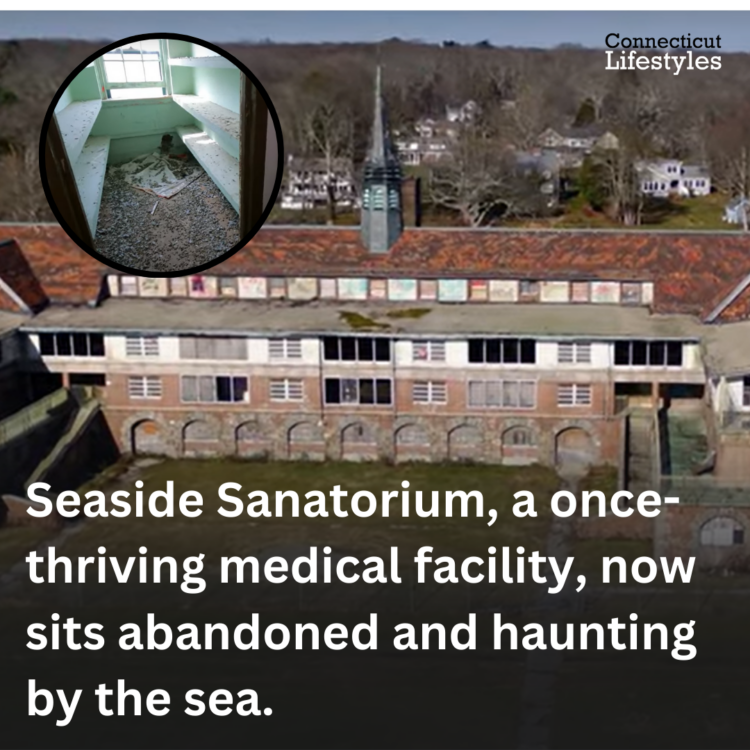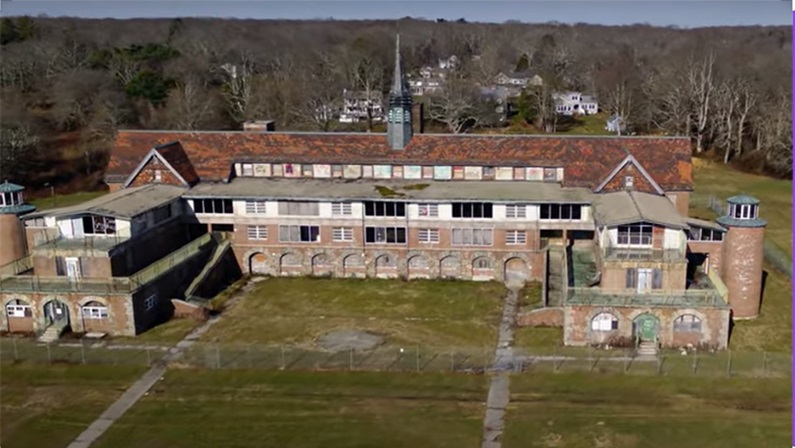The historic Seaside Sanatorium, a coastal landmark in Waterford, has long been a point of fascination and controversy in Connecticut.
This storied site, designed by renowned architect Cass Gilbert in the 1930s, was once a pioneering tuberculosis treatment center, and later, a care facility for elderly and disabled patients.
But now, the state faces a crossroads: whether to preserve the iconic but deteriorating buildings or move forward with a simpler public park concept.
The Connecticut Department of Energy and Environmental Protection (DEEP) recently held a public forum to address the future of Seaside State Park. DEEP plans to demolish the historic structures, transforming the site into a “passive” state park with walking trails, shoreline access, and basic amenities like restrooms.
The proposal to demolish what many consider to be one of Connecticut’s hidden gems has polarized residents and preservationists alike, with over 300 public comments submitted on the matter, evidence of strong community interest in preserving Seaside’s legacy.
A Landmark at Risk?

Seaside Sanatorium has become known as much for its architecture as for its medical and historical significance.
Gilbert, whose portfolio includes the U.S. Supreme Court Building and New York’s Woolworth Building, crafted Seaside’s main structures in the Tudor Revival style, a choice rarely seen in medical facilities of its time. The layout, with sprawling terraces facing Long Island Sound, was intended to maximize the therapeutic effects of fresh air and sunlight for tuberculosis patients.
The buildings were abandoned in 1997, and since then, have suffered from neglect, vandalism, and the harsh coastal elements. Many people now see it as one of the most haunted places in Connecticut due to its condition.
DEEP’s current plan, backed by $7.1 million in funding, seeks to convert the property into a low-maintenance park by 2026.
However, preservation groups like Preservation Connecticut argue that tearing down Seaside’s buildings would erase an irreplaceable piece of the state’s history.
Deputy Director Christopher Wigren voiced concerns about the quick decision to demolish, emphasizing that the buildings could still serve a purpose if a creative, preservation-focused plan were pursued.
“The state needs to consider all possibilities,” Wigren noted at the public forum. “A bit more imaginative thinking could turn these historic structures into something Connecticut residents would be proud of for generations.”
There’s even a petition going around online to save the facility.
Local Concerns and Legal Hurdles
Beyond preservationists, local residents have expressed mixed feelings.
Some worry that increasing public access to Seaside could disturb local wildlife, including a pair of ospreys that nest in the area, while others fear the influx of visitors could disrupt their quiet, residential community.
Still, the grounds have attracted a dedicated following over the years, with photographers, ghost hunters, and history buffs all visiting to capture the site’s haunting charm.
The demolition plan isn’t a done deal yet.
Developer Mark Steiner, who has previously attempted to purchase and preserve the property, has filed a lawsuit against the state under the Connecticut Environmental Protection Act, arguing that the proposed demolition qualifies as “unreasonable destruction” of a historic site.
Steiner, supported by experts in architecture and history, contends that the property could be restored and repurposed, as was once proposed under a “destination park” plan that included a lodge and interpretive space.
A Connecticut Icon Worth Saving?
For fans of Connecticut history, Seaside Sanatorium represents something truly unique.
Gilbert’s vision, the medical significance, and the coastal setting all contribute to its value as a local treasure.
While DEEP aims to provide safe public access to the shoreline, the decision to forgo preserving the structures is causing many to question if a simpler park can truly capture the essence of what Seaside once was.
At present, visitors can only explore the grounds from afar, with the buildings fenced off and showing visible signs of decay.
But even in its current state, the site offers an eerie beauty, with views of the Sound and remnants of the sanatorium’s unique architecture still captivating visitors.
What’s Next?
DEEP is moving forward with the demolition and redesign, aiming to create a park space that connects to nearby Harkness Memorial State Park while preserving the coastline for public use.
A public survey is open, seeking feedback on the types of amenities and features people would like to see at Seaside.
However, if Steiner’s lawsuit prevails, the buildings may be saved, opening the door for potential redevelopment of Seaside in a way that respects its historical significance.
For now, Seaside’s future remains uncertain. Connecticut residents and visitors interested in the state’s architectural and medical history are encouraged to visit and experience the park’s unique atmosphere before any major changes take place.
Seaside is not just another state park. It’s a reminder of Connecticut’s deep history and a touchstone for discussions about preservation, access, and community impact.
Whether the historic buildings stand or fall, Seaside will remain a symbol of the ongoing debate over how to honor and utilize our past in the face of modern needs.

